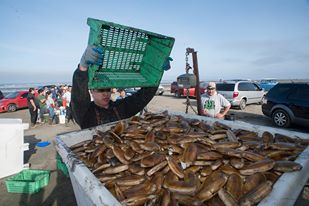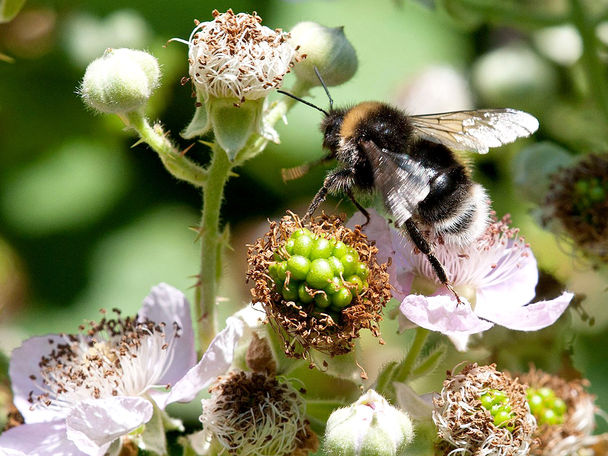Mark C. Van Norman
July 14, 2013 ICTMN
In the Baby Veronica case, Associate Supreme Court Justice Thomas writes that the Indian Child Welfare Act is unconstitutional because it is not “commerce” in the sense of “trade.” Domestic relations, he says, are left to the states. When it comes to American Indians, Native Nations and the Constitution, Thomas is wrong. The Constitution’s Treaty, Commerce, Supremacy, Apportionment and Property Clauses, the War Powers, and the 14thAmendment are the foundation for the Indian affairs powers and the United States’ nation-to-nation relations with Native Nations.
The starting point for analysis is always: Indian nations and tribes were independent, sovereign nations prior to the formation of the United States. Indian nations managed native justice systems, economies, education, health care, and domestic relations. In the earliest Indian treaties, the United States extended its protection to Indian nations—for example, the Cherokee Nation Treaty of 1785 provides that: “[t]he Indians for themselves and their respective tribes … do acknowledge all the Cherokees to be under the protection of the United States of America, and of no other sovereign whosoever.” The United States intended this provision to oust the British from North America, yet it must be read as the Cherokee Nation would have understood it—a pledge of protection for the Native Nation, not U.S. dictatorship, tyranny or despotism. Thomas Jefferson recognized that Native Nations were governed by native traditions, customs, and laws.
The Articles of Confederation, America’s original governing document, provides that:
The United States in Congress assembled shall also have the sole and exclusive right and power of … regulating the trade and managing all affairs with the Indians, not members of any of the States, provided that the legislative right of any State within its own limits be not infringed or violated.
Articles of Confederation, Art. XI (Passed by Continental Congress 1777, ratified 1781–1789). In practice, this allocation of power was not practical because the grant of authority to Congress was too qualified and the states continued to claim concurrent power over Indian affairs. The weakness of the Indian Affairs power was exemplary of the overall problems for the United States under the Articles of Confederation. This provision does not inform the Constitution by reserving state’s rights in the field of Indian affairs.
General George Washington chaired the Constitutional Convention, and contrary to Justice Thomas’s suggestion, he did not carry forward the Articles of Confederation. In partnership with Franklin, Jefferson and others, Washington and his party of Federalists, Jay, Hamilton, and Madison, rewrote the Constitution to ensure the success of the United States of America as one Nation. Washington made sure that the Federal Government had plenary authority—vis-à-vis the states—over Indian affairs (and other areas of Federal authority). Washington sought to forestall brushfire wars along the United States border because he knew that American citizens, who encroached on Indian lands and “endangered” the peace of the Union by violating Indian treaties, started Indian wars.
Accordingly, the Constitution says simply, “Congress shall have the power to regulate Commerce … with the Indian Tribes,” and state laws that are contrary to Federal law are preempted by the Supremacy Clause. Thomas’s broadside notwith-standing, this is not the only font of Federal authority concerning government-to-government relations with Indian nations and tribes. The United States negotiated 17 treaties under the Articles of Confederation prior to the Constitution, and 10 of those were treaties with Indian Nations (Cherokee Nation, Choctaw Nation, Six Nations). The Constitution affirms those treaties already made, including the treaty pledges of protection for Indian nations. The Constitution also authorizes new treaties. The Constitution, through the Treaty and Supremacy Clauses, recognizes Indian nations and tribes as prior sovereigns, with authority to enter treaties and those treaties reserved tribal self-governance over Indian lands and tribal citizens. Over 370 Indian treaties were entered under the Treaty Clause. The Apportionment Clause expressly excludes tribal citizens from direct taxation and congressional apportionment as “Indians not taxed.” Our people were citizens of our own Native Nations, not the United States.
As Chairman of the Constitutional Convention, Washington is a reliable guide to the Constitution’s meaning. In 1790, one year after its ratification, President Washington entered the Treaty with the Creek Nation, guaranteeing Creek territory, pledging protection, promoting justice, agriculture, and civilization. With regard to the “beloved” Cherokee Nation, President Washington exhorted them to undertake agriculture, sell their surplus to their white neighbors, gather in national council and send delegates to Congress, expressing their priorities and concerns.
Jefferson’s legacy is the Louisiana Purchase. In the 1803 Louisiana Purchase Treaty, the United States pledged to honor the international treaties with Indian nations, until such time as the United States by “mutual consent” entered its own treaties. Under Jefferson’s leadership, the United States passed laws for Indian traders, Indian education, and restricted liquor sales. Later, Indian treaties included provisions for tribal territorial integrity, self-government, agriculture, allotment of lands, education, health care, “civilization.” Domestic relations were addressed through treaties, when non-Indian husbands of Indian women were included in allotment of tribal lands and crimes between Indians were reserved to tribal self-government. Indian children were often sent far from home to military boarding schools, like Carlisle School in Pennsylvania, or educated in government boarding schools on Indian reservations. InUnited States v. Quiver(1916), the Supreme Court explained that:
At an early period it became the settled policy of Congress to permit the personal and domestic relations of the Indians with each other to be regulated, and offenses by one Indian against the person or property of another Indian to be dealt with, according to their tribal customs and laws. Thus the Indian intercourse acts of 1796 and 1802 provided for the punishment of various offenses by white persons against Indians and by Indians against white persons, but left untouched those by Indians against each other.
After 90 years of Indian treaty-making, Congress promulgated, and the states ratified, the 14thAmendment. Congress intended to make freed slaves citizens through the Citizenship Clause, but intentionally excluded the citizens of Indian nations from U.S. Citizenship. Native people were not “subject to” the jurisdiction of the United States, as required by the new Clause. Our people were subject to tribal government jurisdiction.
When the 14thAmendment removed the constitutional reference to slavery (3/5s of other persons) and counted “All persons, excluding Indians not taxed,” the political status of tribal citizens was affirmed. Under the Indian Peace Policy of the post-Civil War era, the United States entered into over 70 Indian treaties while the 14thAmendment was considered and ratified. By repeating the original language of the Constitution, the 14thAmendment should be read to affirm the original Indian affairs powers of the United States. In this way, the Nation approved an expansive view of the Indian affairs power and the government-to-government relationship between the United States and Indian nations.
The Supreme Court has found that the War Powers are also among the Indian affairs powers because the United States, having made war on Indian nations, also had the power to make peace. Indeed, President Washington put Secretary of War Knox in charge of treaty-making with the Cherokee Nation in 1790. The Department of War was the original home of the Bureau of Indian Affairs. The United States destroyed traditional tribal economies and disrupted our Indian communities by warfare, so the United States has the power to assist Indian nations in restoring tribal economies and Indian communities. (Think of the Marshall Plan.) And, under the Constitution’s Property Clause, the United States, having taken original Indian lands as “surplus” and having claimed title over remaining Indian lands to protect them against alienation, also had the power to restore Indian lands.
In his Baby Veronica opinion, Thomas would have us believe that because no furs, beads or kettles, hatchets or guns were traded, the Indian Child Welfare Act is unconstitutional. His view ignores the history of the United States relations with Indian nations, the Constitution’s text, treaties, statutes, and a rich body of Supreme Court precedent. As Chief Justice Marshall said in the 1830s Cherokee Nation cases, the duty to protect is not a license to destroy. Where the United States pledged through treaties (affirmed by the 14thAmendment) to protect Indian nations, Congress now has the power to protect our Indian children so they, as our future citizens, are not stripped away from our Indian nations.
Under the Constitution, it is well within Congress’s power to protect Indian families and children through the Indian Child Welfare Act. Justice Thomas is just plain wrong when he says otherwise.
Mark C. Van Norman is the Executive Director for the National Indian Gaming Association.













